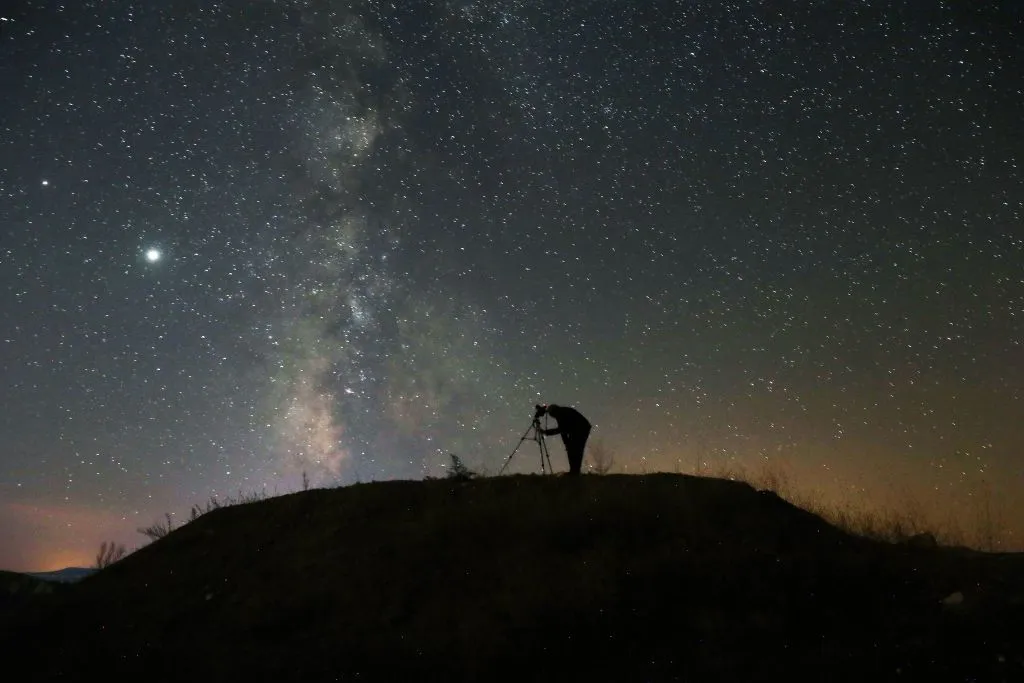On Monday, stargazers around the world were treated to a rare sight – a planetary parade. Mercury, Jupiter, Venus, Uranus, Mars, and the Moon formed an arc in the evening sky, visible to the naked eye. This phenomenon occurs when the planets are in relative proximity to one another, and their positions align with Earth’s perspective.
Known as a planetary parade, this event could be observed in the west after sunset. However, for the best chance of spotting the alignment, one needed a clear view of the horizon and clear skies. Last summer, a rare planetary conjunction occurred, with Mercury, Venus, Mars, Jupiter, and Saturn coming together. This event was also visible to the naked eye and lasted for several weeks.
To view the planets on Monday, it was recommended to be away from bright city lights, and observing early in the evening was crucial as Mercury and Jupiter disappeared over the horizon quickly. The best views were reported from northern parts of Scotland and its islands due to clear skies.
Astronomer Royal for Scotland, Prof Catherine Heymans, enjoyed the spectacle from Edinburgh’s Portobello beach. She said, “Planet spotting on a crystal clear night along with so many other planetary parade enthusiasts was an absolute delight!”
However, astronomer Jake Foster from the Royal Observatory Greenwich clarified that such alignments were not due to the planets’ alignment in the solar system but because of our perspective on Earth. He explained that occasionally, from our perspective, the planets get close enough to each other in the sky to be seen simultaneously.
The north Wales island, Ynys Enlli, has become Europe’s first site to be awarded International Dark Sky Sanctuary certification due to its dark skies. The Anglesey in north Wales is considered to have some of the darkest skies in Europe. Dani Robertson, the dark skies officer for North Wales, observed the event from her back garden and reported seeing a crescent moon, Mars, and Venus. However, she noted that Uranus would require a telescope to see.
In Hexham, near the Scottish border, Dan Pye from the Kielder Observatory said observing the planetary parade provided perspective about our position in the solar system. “Over the course of the night, the distance between these objects shifts as the moon goes around us, we move a little further around the sun, and the planets continue their journeys around the sun. I think witnessing this helps you realize the connection we have to the cosmic ballet we have with other objects in just our very local space theatre,” he said.
Ms Robertson, an amateur astronomer, expressed disappointment that 98% of people in the UK lived under polluted skies, preventing them from observing the night sky’s beauty. She suggested that fixing this problem would be relatively easy and permanent. “Once we’ve fixed a light to make dark skies, that’s the problem solved,” she said.
In conclusion, the planetary parade was a rare and beautiful event that provided a unique perspective on our position in the solar system. While stargazing opportunities may be limited by light pollution in urban areas, the event reminded us of the importance of preserving dark skies for future generations to enjoy.




